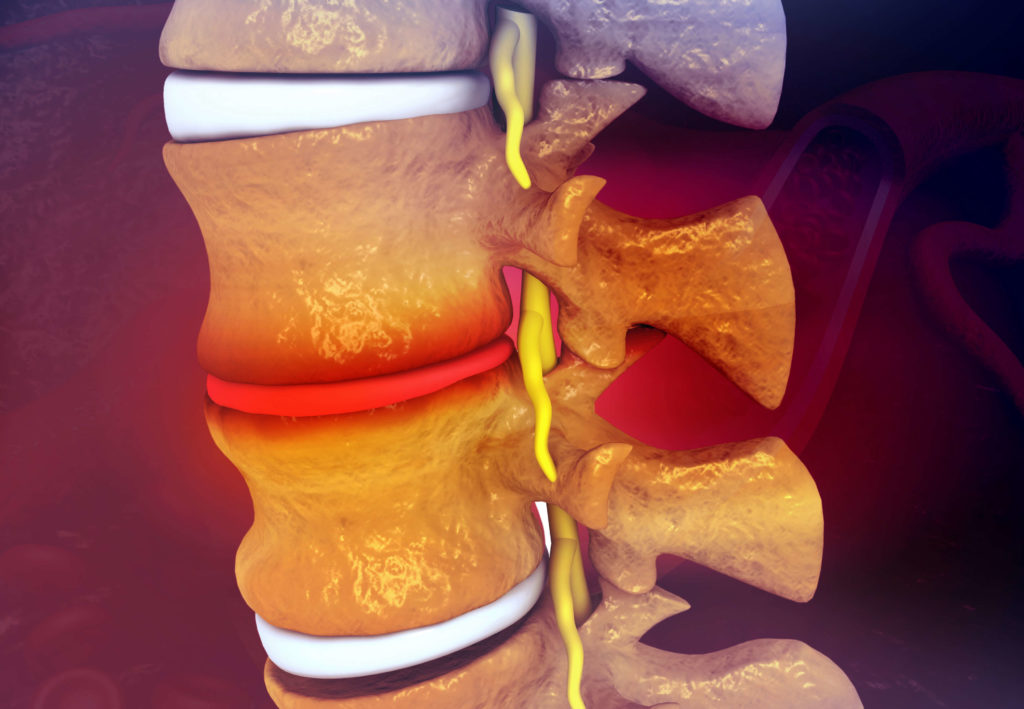
A slipped disc is when you encounter an intervertebral disc which has lost its natural shape or consistency. This may lead to an instance where the disc’s soft, inner material ruptures and bulges. There are multiple terms to describe a slipped disc such as: herniated disc, bulging disc, ruptured disc, etc… In this post, we’ll be discussing the basics of a slipped disc and how we can help you if you’re currently experiencing, or have experienced slipped disc issues.
How a Slipped Disc Occurs
A slipped disc occurs through natural degradation or trauma to the back, neck, or spine area.
Natural Degeneration
Natural degeneration typically occurs as we age and when paired with lifestyle choices along the way. These lifestyle choices may consist of poor diet, smoking, lack of exercise, etc… We’re much more vulnerable to disc degradation as we begin to reach our elder years, yet when you combine old age with poor lifestyle choices, your risk for disc degeneration may increase.
Trauma
Trauma to the disc area can occur at any age. Some common examples are lifting a very heavy object and “throwing out your back”, or even whiplash from a car accident causing your disc to bulge or herniate. The difference between natural degradation and trauma is you’ll most likely notice the pain and discomfort immediately after the time of injury due to trauma. With natural degradation, it may take years before it becomes painful enough to significantly reduce your quality of life.
Contained vs. Uncontained Discs
A contained disc is when the nucleus pulposus remains intact and does not escape outside the outermost layer of the disc. An uncontained disc is when the nucleus pulposus leaks outside of the disc completely.
Various Types of Pain from a Slipped Disc
There are multiple types of pain when it comes to slipped discs. You may notice pain in the immediate area of a slipped disc. You may also notice pain elsewhere throughout the body due to the fact slipped discs can cause pain to pop up elsewhere through nerve issues. You may also not experience any pain at all in some cases. It ultimately depends on the unique slipped disc conditions you’re experiencing within your body.
Nerve Pain
Nerve pain is typically caused by either the mechanical compression of the nerve roots or the chemical irritation of the nerve roots. The mechanical compression of the nerve roots is a result of the literal compression in the disc area which may result in pinched or compressed nerves. The chemical irritation of the nerve roots is a result of the leaking of inflammatory substances from the nucleus pulposus.
Chronic Localized Pain
Chronic, localized pain is often experienced as “neck pain”, or “back pain”. This type of pain is often referred to as discogenic pain. Chronic, localized pain is felt often, or at least on a semi-regular basis and is within a specific area of the neck, back, or spine.
Motion Segment Instability
Motion segment instability is typically the result of natural degeneration. With natural degeneration, one may develop instability in the spinal motion segment which results in pain and abnormally increased or decreased mobility.
The Importance of a Correct Diagnosis
If you believe you’re experiencing a slipped disc issue and want to determine the cause and solution, we’re here to help! We want to assist in having you return to your previous quality of life. We know chronic pain can be truly detrimental to your everyday activities, so we’re here to help diagnose and treat exactly what’s going on. Feel free to contact us using the form below and we’ll be sure to respond to your inquiry as soon as possible. We look forward to hearing from you soon!
DISCLAIMER: No content on this site, regardless of date, should ever be used as a substitute for direct medical advice from your doctor or other qualified clinician.